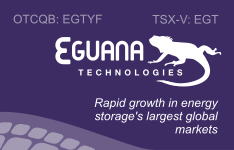Q2: Gold Miners Return to Net Hedging
Source: Mining Weekly, Liezel Hill (9/30/10)
"Gold producers added a net 160,000 ounces of hedging in Q2."
Gold producers added a net 160,000 ounces of hedging in the second quarter of this year, marking a shift from an extended period of sharp hedge cuts, consultancy GFMS said on Thursday.
In its quarterly global hedge book analysis, published with Societe Generale, GFMS said the figure represented a 2% addition to the total global hedge book, which stood at 7.19 million ounces at mid-year.
However, this does not likely signal a change in gold mining company's attitude and appetite for new strategic gold hedging, GFMS noted, pointing out that most of the new hedges put in place were required for developers to get project financing.
The group has actually raised its forecast for the net dehedging expected this year, to 4.21 million ounces, to reflect recent announcements.
Hedging allows companies to sell their gold forward, at predetermined prices. It ensures that a certain return for production, but can limit the benefits they see from higher prices.
With prices at record levels, gold miners have been steadily reducing their forward sales for the most of the last decade—often in response to pressure from shareholders who want to see greater exposure to the market.
Despite the fact that gold is heading for its tenth straight year of gains, producers still do not seem interested in locking in the current record prices, GFMS noted.
"There is yet to be a discernible swing by producers toward a renewed appetite for strategic hedging, with the new hedges seen in the second quarter project based around project finance," the report said.
"We continue to believe that alternative means of project financing, such as metal streaming agreements, will circumvent the need for fresh hedging in some cases," it added.
In its quarterly global hedge book analysis, published with Societe Generale, GFMS said the figure represented a 2% addition to the total global hedge book, which stood at 7.19 million ounces at mid-year.
However, this does not likely signal a change in gold mining company's attitude and appetite for new strategic gold hedging, GFMS noted, pointing out that most of the new hedges put in place were required for developers to get project financing.
The group has actually raised its forecast for the net dehedging expected this year, to 4.21 million ounces, to reflect recent announcements.
Hedging allows companies to sell their gold forward, at predetermined prices. It ensures that a certain return for production, but can limit the benefits they see from higher prices.
With prices at record levels, gold miners have been steadily reducing their forward sales for the most of the last decade—often in response to pressure from shareholders who want to see greater exposure to the market.
Despite the fact that gold is heading for its tenth straight year of gains, producers still do not seem interested in locking in the current record prices, GFMS noted.
"There is yet to be a discernible swing by producers toward a renewed appetite for strategic hedging, with the new hedges seen in the second quarter project based around project finance," the report said.
"We continue to believe that alternative means of project financing, such as metal streaming agreements, will circumvent the need for fresh hedging in some cases," it added.


















































